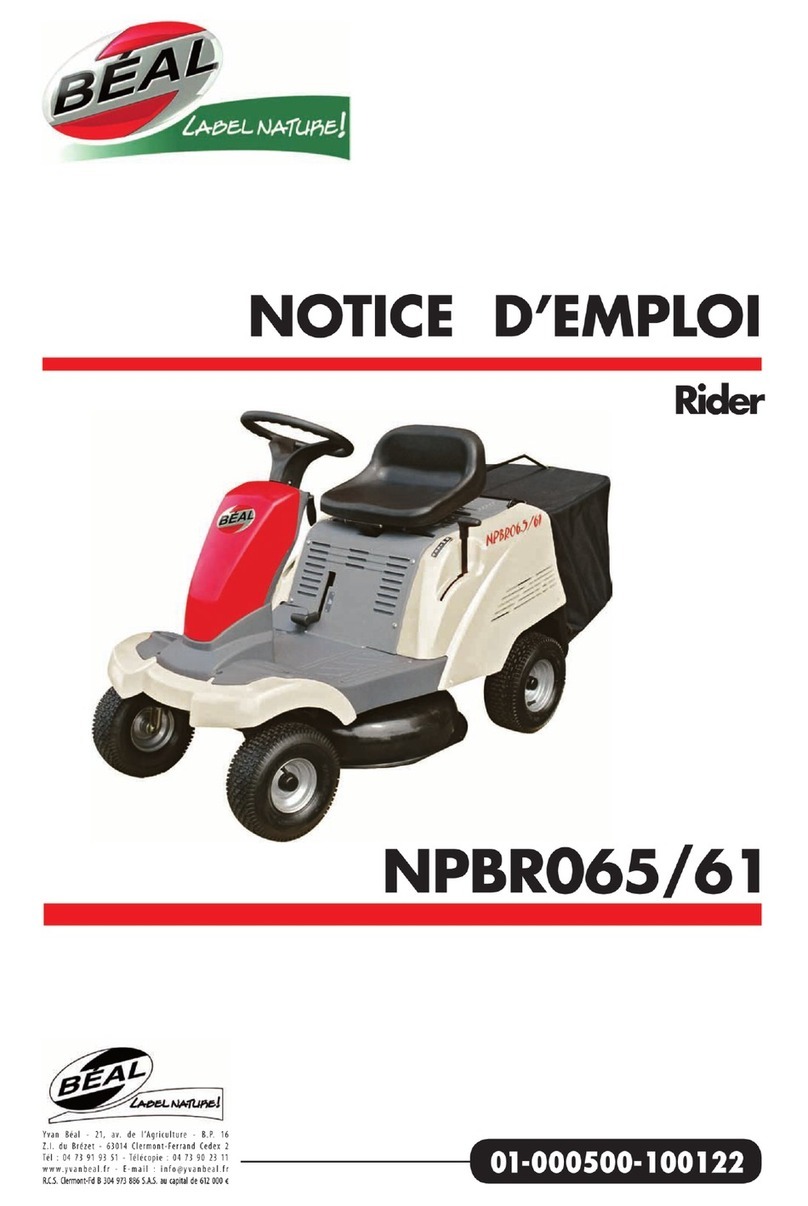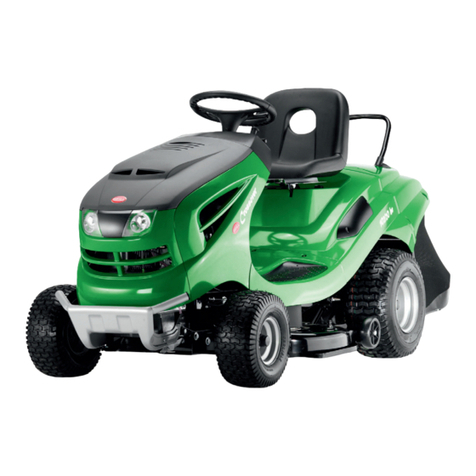
9
Safe Operation Practices
For Ride-On (Riding) Rotary Mower Machines
Training
Read the instructions carefully. Be familiar with the1.
controls and the proper use of the equipment.
Never allow children or people unfamiliar with these2.
instructions to use the mower. Local regulations may
restrict the age of the operator.
Never mow while people, especially children, or pets3.
are nearby.
Keep in mind that the operator or user is responsible4.
for accidents or hazards occurring to other people or
their property.
Do not carry passengers.5.
All drivers should seek and obtain professional6.
and practical instruction. Such instruction should
emphasize:
the need for care and concentration when workinga.
with ride-on machines;
control of a ride-on machine sliding on a slope willb.
not be regained by the application of the brake. The
main reasons for loss of control are:
insufficient wheel grip;•
being driven too fast;•
inadequate braking;•
the type of machine is unsuitable for its task;•
lack of awareness of the effect of ground•
conditions, especially slopes;
incorrect hitching and load distribution.•
Preparation
While mowing, always wear substantial footwear and1.
long trousers. Do not operate the equipment when
barefoot or wearing open sandals.
Thoroughly inspect the area where the equipment is to2.
be used and remove all objects which may be thrown
by the machine.
WARNING – Petrol is highly flammable.3.
Store fuel in containers specifically designed fora.
this purpose.
Refuel outdoors only and do not smoke whileb.
refuelling.
Add fuel before starting the engine. Never removec.
the cap of the fuel tank or add petrol while the
engine is running or when the engine is hot.
If petrol is spilled, do not attempt to start thed.
engine but move the machine away from the area
of spillage and avoid creating any source of ignition
until petrol vapours have dissipated.
Replace all fuel tanks and container caps securely.e.
Replace faulty silencers.4.
Before using, always visually inspect to see that the5.
blades, blade bolts and cutter assembly are not worn or
damaged. Replace worn or damaged blades and bolts
in sets to preserve balance.
On multi-blade machines, take care as rotating one6.
blade can cause other blades to rotate.
Operation
Do not operate the engine in a confined space where1.
dangerous carbon monoxide fumes can collect.
Mow only in daylight or in good artificial light.2.
Before attempting to start the engine, disengage all3.
blade attachment clutches and shift into neutral.
Do not use on slopes of more than 10 degrees.4.
Remember there is no such thing as a “safe” slope.5.
Travel on grass slopes requires particular care. To
guard against overturning:
do not stop or start suddenly when going up ora.
downhill;
engage clutch slowly, always keep machine in gear,b.
especially when travelling downhill;
machine speeds should be kept low on slopes andc.
during tight turns;
stay alert for humps and hollows and other hiddend.
hazards;
never mow across the face of the slope, unless thee.
mower is designed for this purpose.































